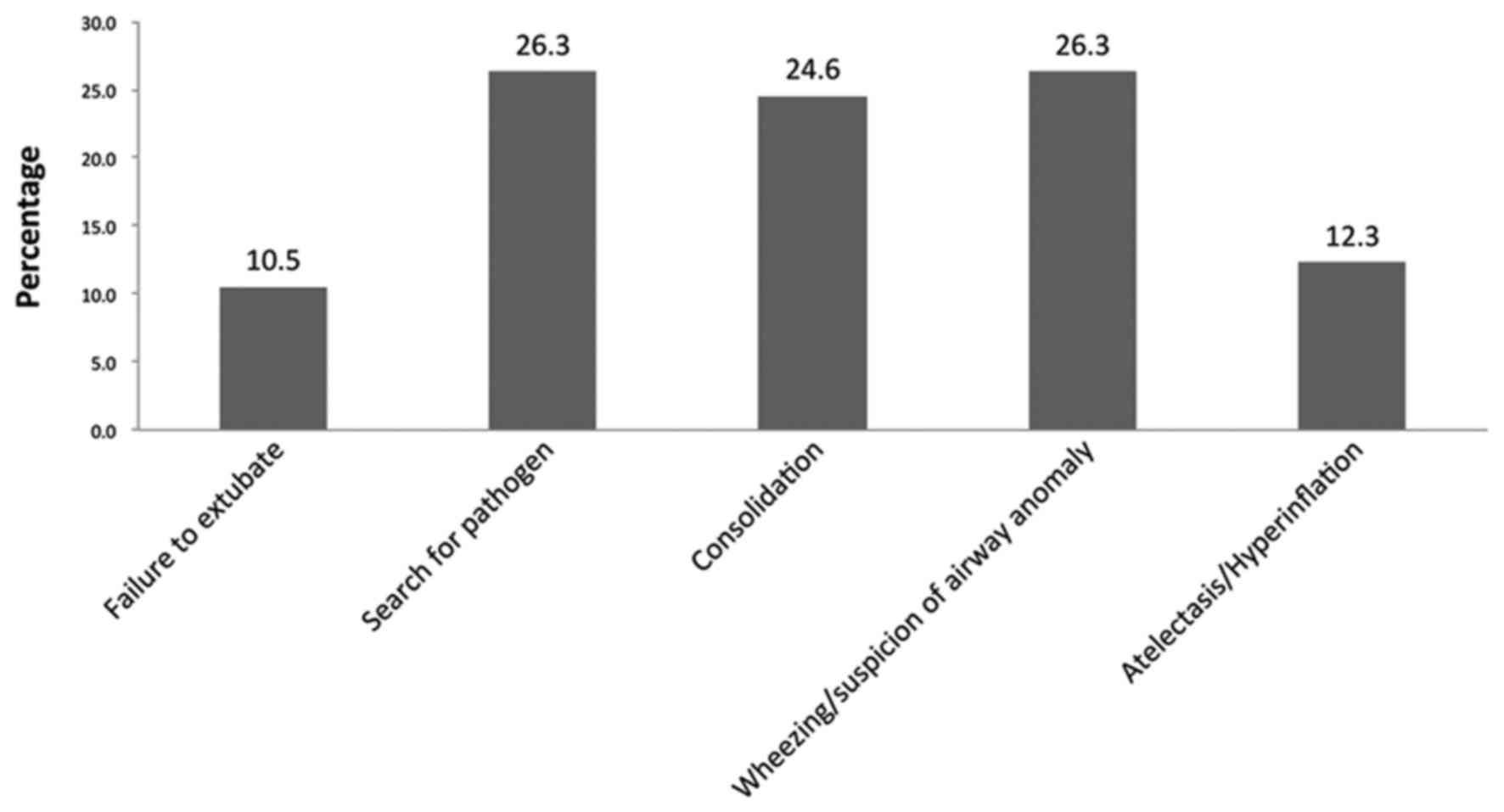Flexible bronchoscopy in pulmonary diseases in children with congenital cardiovascular abnormalities
- Authors:
- Published online on: May 2, 2018 https://doi.org/10.3892/etm.2018.6113
- Pages: 5481-5486
Metrics: Total
Views: 0 (Spandidos Publications: | PMC Statistics: )
Total PDF Downloads: 0 (Spandidos Publications: | PMC Statistics: )
Abstract
There is a lack of data describing the role of flexible bronchoscopy (FB) in evaluating pulmonary diseases in children with congenital cardiovascular abnormalities in China. Determining whether those children suffer from respiratory complications may be useful for future preoperative planning and family counseling. The present study aimed to investigate the features and FB‑associated findings with respect to pulmonary diseases in children with congenital cardiovascular abnormalities. The role of FB in guiding the treatment and safety of procedures was also evaluated. A cohort of 57 children with congenital cardiovascular abnormalities underwent FB for pulmonary diseases between November 2013 and June 2015. The demographics, bronchoscopy diagnoses, cellular analysis and microbiology of bronchoalveolar lavage fluid (BALF), and the clinically valuable contributions and side‑effects of FB were analyzed retrospectively. The bronchoscopies were performed in patients with a median age of 4 months (range, 9 days‑9 years) and 9 patients were intubated and mechanically ventilated. The most common types of congenital cardiovascular abnormalities were atrial septal defect, ventricular septal defect and patent ductus arteriosus. External compression of airways, tracheobronchomalacia, laryngomalacia, and airway narrowing were the most common airway abnormalities revealed by FB. BALF cellular analysis revealed an elevated total cell count and neutrophil percentage; 19.2% specimens harbored an etiological agent. FB findings contributed towards the clinical management of 26.3% patients. The complications of FB were mild and transient. In the present study, the majority of patients with cardiovascular abnormalities exhibited other airway disorders. The present findings suggest that FB was a useful and safe tool in the evaluation of this specific group of children.











